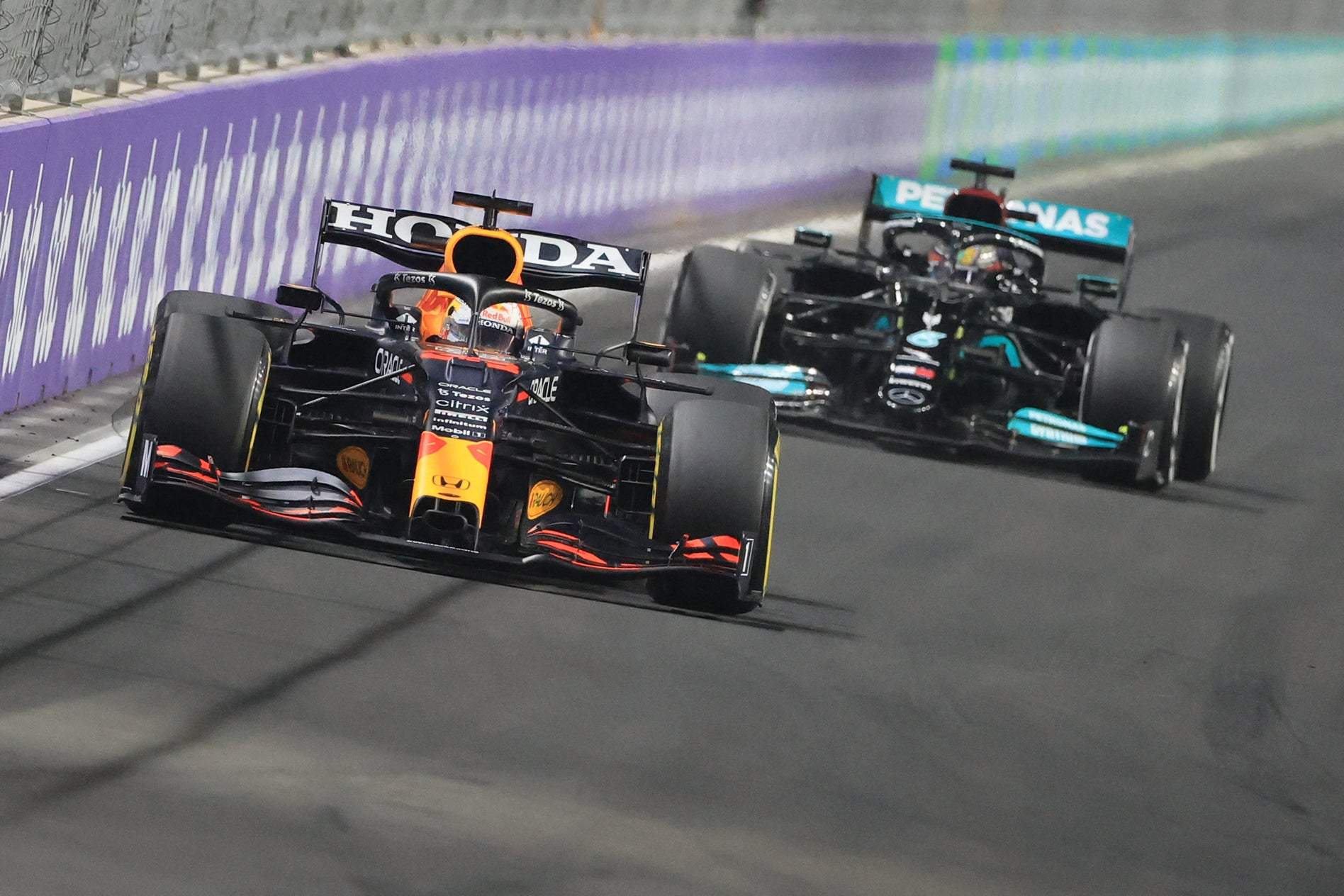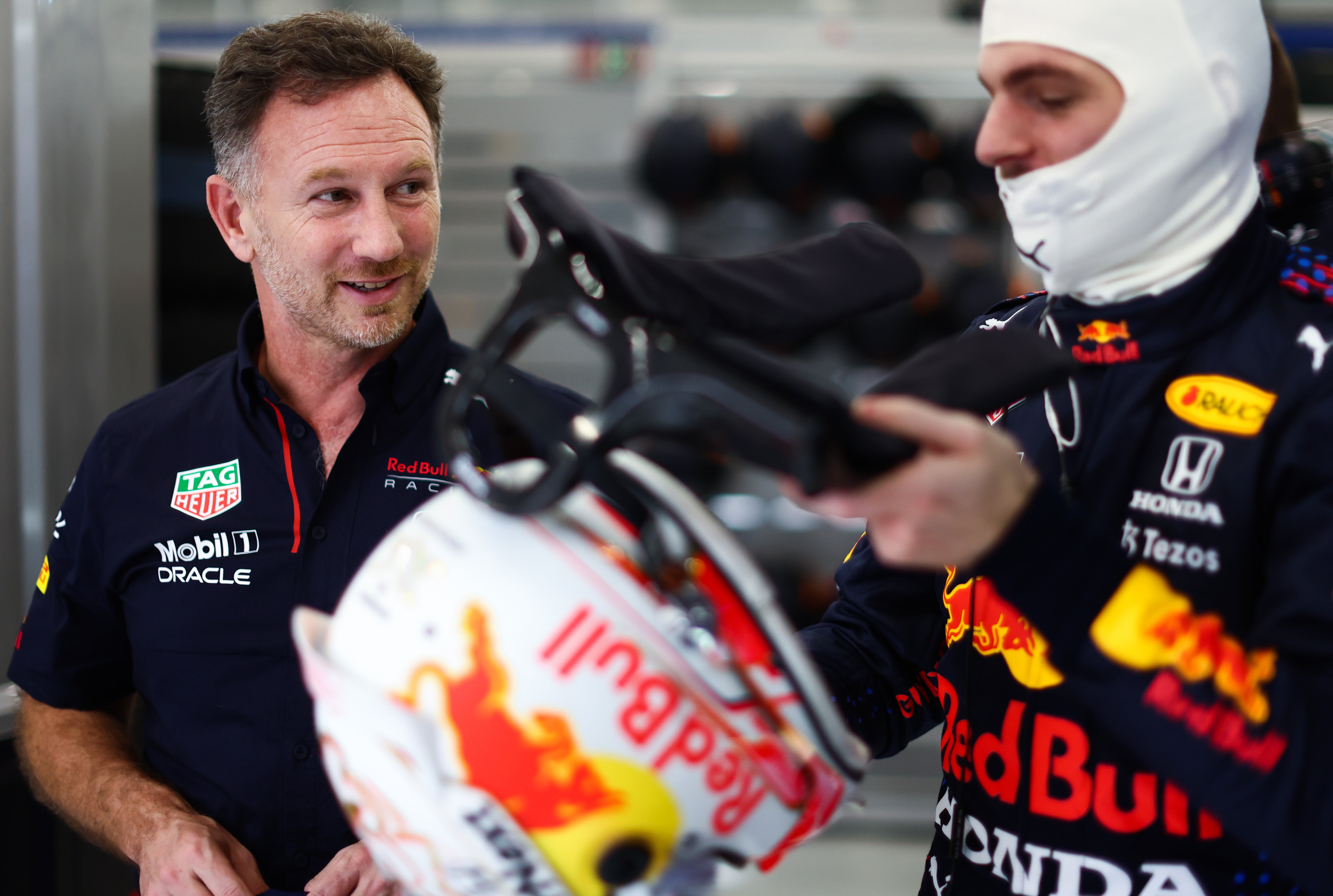Fans new and old are hooked on F1’s renaissance as gripping season lives up to the Netflix hype
The docu-series Drive to Survive has earned Formula 1 a new fanbase, writes Vithushan Ehantharajah, and the rivalry between Lewis Hamilton and Max Verstappen is delivering on growing interest in the sport


Your support helps us to tell the story
From reproductive rights to climate change to Big Tech, The Independent is on the ground when the story is developing. Whether it's investigating the financials of Elon Musk's pro-Trump PAC or producing our latest documentary, 'The A Word', which shines a light on the American women fighting for reproductive rights, we know how important it is to parse out the facts from the messaging.
At such a critical moment in US history, we need reporters on the ground. Your donation allows us to keep sending journalists to speak to both sides of the story.
The Independent is trusted by Americans across the entire political spectrum. And unlike many other quality news outlets, we choose not to lock Americans out of our reporting and analysis with paywalls. We believe quality journalism should be available to everyone, paid for by those who can afford it.
Your support makes all the difference.Max Verstappen and Lewis Hamilton level on 369.5 points with a race to go. The former ahead on wins, the latter going into this showdown of the 2021 season on Sunday in Abu Dhabi with three consecutive chequered flags. Both have spent the year at each other’s wings and throats in one of the most enthralling seasons in history. As a finale, you couldn’t script it any better. And that’s kind of the point.
Since the beginning of the pandemic, Formula One has enjoyed a remarkable boost in popularity through Drive to Survive, the Netflix documentary series that has become an unpredicted sensation. If Tiger King won the streaming sprint at the start of lockdown, Drive to Survive has led the marathon, fuelled along the way by new and lapsed fans connecting and reconnecting with a sport that lost its public exposure and spent a generation wrestling with itself to reclaim ground.
Three seasons in, the show has spent time in Netflix’s outright top 10 in 28 countries. Figures released earlier this year reported a 99 per cent year-on-year increase to approximately 810 million social media engagements for F1 in 2020, with a 36 per cent increase in followers (to 35 million) across Facebook, Twitter, Instagram, YouTube, TikTok, Snapchat, Twitch and Chinese platforms. A similar trend is expected to be reported in 2021. F1 has 40.8 million followers across the first four social channels alone at the time of writing. This tallies with a noted surge of interest from those within the valuable phone-scrolling 16 to 35 age bracket.
Individual drivers have seen their personal brands enhanced and even those characters who reside off the grid, whose cut-throat treatment has been an eye-opening part of the docu-series. One insider joked to The Independent that more and more team members are using Drive to Survive screenshots in dating profiles for extra recognition.
They will try to make you look reckless or try to make you… whatever fits the story
Through algorithms and word of mouth, a previously dull world of repetition, restrictions and complex engineering has engaged casuals without losing the diehards. And with more eyes on it than ever before – which will dramatically increase on Sunday with a dip back into the free-to-air audience after Sky Sports agreed to share their coverage with Channel 4 – old and new racing romantics will be united.
In some ways, 2021 has created a sense of independence between events on the track in 2021 and the remit of Drive to Survive’s creators, Box to Box Films. That is perhaps best reflected in our two main protagonists this season and their associates.
Hamilton and his team principal Toto Wolff were sceptical of the show from the start because of the level of access required and the distraction it could cause. Mercedes-AMG Petronas and Ferrari were the only two of the 10 teams to not play ball in season one (2018) before softening their stance by season two after seeing the bigger picture.
Verstappen, however, remains wary, refusing to take part in the fourth season documenting 2021 because of what he perceived as a bit of economy with the truth from the producers. “They will always position you in a way they want,” he said in October. “So whatever you say, they will try to make you look reckless or try to make you… whatever fits the story of the series.”
His Red Bull team principal, Christian Horner, gets it – both Verstappen’s stance and the show. “What I think frustrates him sometimes,” Horner tells The Independent, “is they will take a cutting from one race and apply it to another. Of course, he’s a perfectionist, so he’ll say, ‘no, that radio was from Monaco, not Monza’. At the end of the day it’s a TV show.”
Horner has more than made up for Verstappen’s unwillingness to engage, and the raising of his profile outside the sport has meant jogs around his neighbourhood are regularly halted by requests for selfies. He has embraced the role of protagonist and antagonist, to riff on a phrase he used against Wolff earlier this season. Indeed the pair offer Drive to Survive viewers the clearest route into this season’s wrangling at the sharp end given how often they have had to weigh into matters around their drivers. Their relationship, much like those in the cockpit, has grown exponentially fraught. Their only common ground might be that they are on par with Roman Roy as modern television’s most unsuspected crushes.

Yet it is clear the pretence of showbiz has been slowly chipped away this campaign. A contentious penultimate race in Saudi Arabia, in which Verstappen was handed two time penalties for driving infringements, which included braking erratically and causing Hamilton to run into the back of his Red Bull, has fuelled one final battle in the war or words. But when the cameras are switched off, and the season packs away, the ill-feeling will remain. “I think they might need to tune it down rather than tune it up,” joked Horner on any dramatising that may go on in post-production for season four, mooted to go live in March 2020.
Nevertheless, the sport is desperate for a fairytale finish with both cars crossing the line, whether that’s Hamilton for world championship number eight or Verstappen for his first. FIA race director Michael Masi reminded both drivers of their duty to play fair. Attempts to influence the race through contact will be punishable by a title-altering points deduction. A frank and necessary warning given how much contact there has been between the two even before last weekend’s jostle in Jeddah. Should they take each other out of the race as they did in Monza, Verstappen would take the title with his nine season wins to Hamilton’s eight.
Without doubt there is a morbid fascination with the idea of a nefarious conclusion to this 22nd and final race. Maybe if this were in the laps of scriptwriters that would be the only ending on the storyboard befitting this arc, where narrative trumps all and any casualties are fictional.
But as Formula One sits at the vanguard of sports entertainment, it does so with a renewed sense of self-worth and never more comfortable. The sport itself is doing all the entertaining.
Join our commenting forum
Join thought-provoking conversations, follow other Independent readers and see their replies
Comments